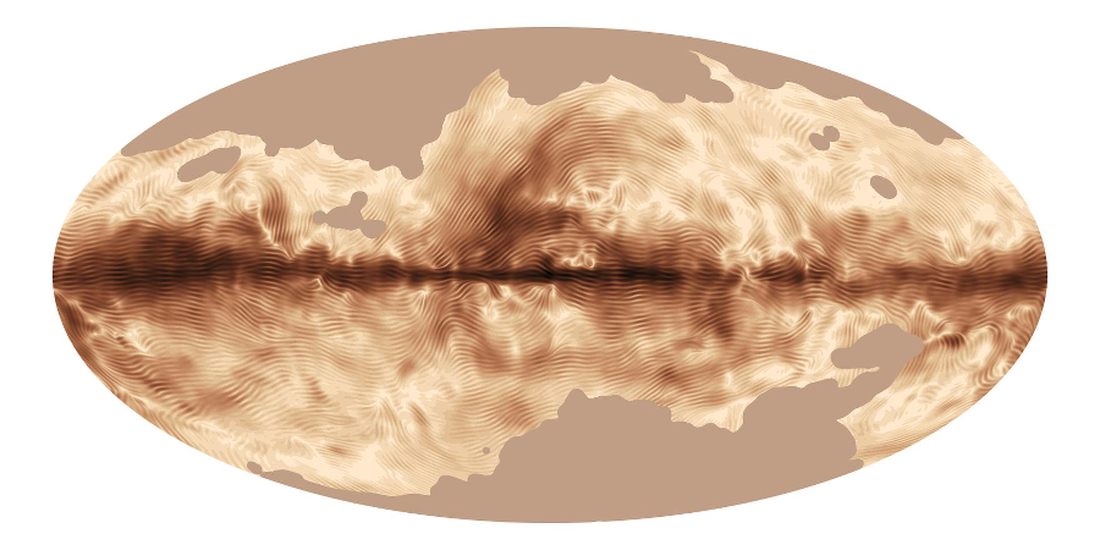
 Credit: ESA and the Planck Collaboration
Credit: ESA and the Planck Collaboration
Magnetic Milky Way
Magnetic fields are complicated things. Magnetic fields are generated by the motion of charged particles like electrons. The motion of hot plasma below the surface of the Sun generates the Sun's topsy-turvy magnetic field, which gets tangled by the solar rotation and generates cycles of sunspots and solar storms. Our entire Galaxy, too, is magnetized, though the origin of the Galactic magnetic field is not well understood. The image above is an image of the Milky Way's magnetic field as seen by the Planck satellite. Planck can measure the polarization, or the direction of oscillation, of light waves. Light that passes through the Milky Way scatters off grains of dust distributed throughout the Galaxy. Dust grains composed of iron compounds can be aligned by the Galaxy's magnetic field, like iron filings placed near a bar magnet. When light scatters off these aligned dust grains, the direction of oscillation of the light wave also gets aligned; measurement of the resulting polarization of the light thus shows how aligned the dust grains are, and thus how strong the magnetic field is, in that region of space. In the map above, darker regions show higher polarization, and hence regions of stronger magnetic field. The lines superimposed on the image indicate the direction of the magnetic field through the Galaxy. The magnetic field of the Milky Way is largely aligned parallel to the disk of our Galaxy, with some interesting local deviations.
Published: May 12, 2014
<
HEA Dictionary ● Archive
● Search HEAPOW
● Other Languages
● HEAPOW on Facebook
● Download all Images
● Education ● HEAD
>

Each week the HEASARC
brings you new, exciting and beautiful images from X-ray and Gamma ray
astronomy. Check back each week and be sure to check out the HEAPOW archive!
Page Author: Dr. Michael F. Corcoran
Last modified Tuesday, 27-Feb-2024 10:06:36 EST


